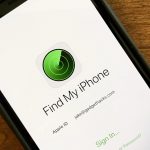What is a fungible vs non-fungible asset?
The whole idea of fungibility is that an asset can be traded for another asset of the same kind.
That is, people can trade one dollar for another dollar knowing that the value is the same no matter which dollar they have.
In contrast to fungible assets, non-fungible assets are worth more or less because of their unique features and scarcity.
Let’s take baseball cards to cite an instance, each card has a unique value because of its features, like the edition number and how rare it is.
Baseball cards are not fungible because each baseball card is worth a different amount and can’t be traded for another baseball card.
What are the key characteristics of a non-fungible token?
The key characteristics of an NFT is what makes an NFT and NFT (hope you are catching up?)
Non-fungible tokens (NFTs) are intended to be
- Cryptographical.
- Verifiable.
- Unique or Scarce, and
- Easily transferrable.
Using cryptographic signatures native to the blockchain on which an NFT is generated, one may quickly and readily determine the origin and current owner of the asset in question in a matter of seconds.
This brings up to the question;
How is a non-fungible token created?
It is very possible to create a non-fungible token through a technique popularly known as minting by an artist, creator, or license holder.
Minting is a procedure that entails signing a blockchain transaction that describes the core token details.
This transaction is then broadcasted to the blockchain, where it triggers a smart contract function that produces the token and assigns it to the token’s owner.
A non-fungible token is comprised of a unique token identification, also known as a token ID.
It is mapped to an owner identifier and stored within a smart contract.
When the owner of a specific token ID chooses to transfer the token to another user, it is super simple to verify the ownership of the NFT and then reassign the token to the new owner using the Token Transfer API.
You might be asking how does NFT relate to blockchain, bitcoin or Ethereum? In fact, how does NFT affect the cryptocurrency space?
Let’s throw more light to further help you under NFT’s
Click on page 3 or the next page button to continue reading!


